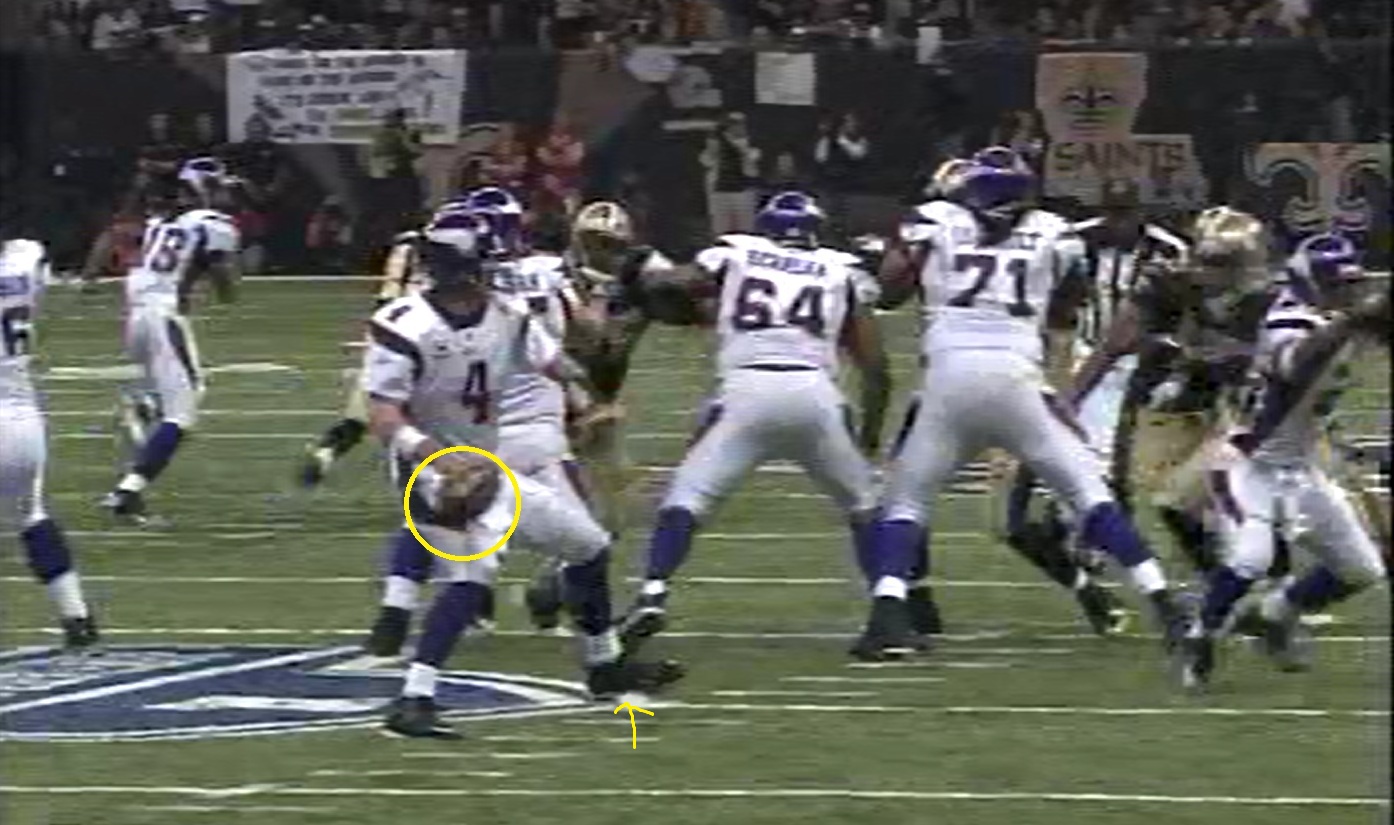
A football writer called me up yesterday morning and broached a topic that I believe separates the savvier talent analysts from the less nuanced: quarterback mechanics.
“How important are quarterback mechanics and what do you make of analysts that cite them as critical cause-effect issues with the development or lack of development of a passer?”
This is what my colleague asked this morning during a phone call. To his credit, he believes that technique–the grammar of positional execution–is only so important. I agree wholeheartedly and I referred him to my post Get Er Done: QB Mechanics By Brett Favre.
I also offered a simpler explanation. Quarterback mechanics are important if the player is consistently failing to deliver accurate, smartly placed targets to his receivers with the necessary touch or velocity in situations where he has the time and room to do so.
However, mechanics do not need to be perfect.Critics will say Favre was an exceptional case, but every player has flaws. Some have minor flaws that aren’t apparent to most fans. Others have a major flaw (or three), but they do enough things well to compensate.
Many still believe that Tim Tebow was too flawed with his mechanics to succeed in the NFL. This is a half-truth, because Tebow was successful as a starter for the Denver Broncos. The team was willing to mold the offense to Tebow’s strengths and the young quarterback displayed the poise, athleticism, and on-field savvy to leverage his strengths into winning football.
The full truth is that Tebow’s mechanics as a passer were too flawed to perform the way most teams want a quarterback to play. Tebow won in the NFL, but if you’re considering Tebow’s skills and flaws from an operational-strategic perspective, then you realize that his talent is too unique to replicate, it doesn’t fully involve the surrounding talent in ways you’ve acquired them to perform, and changing the entire scheme is not a smart investment when there’s no viable redundancy plan in place if Tebow gets hurt.
The scouting of football players–especially quarterbacks–is not of the assembly line. One flaw doesn’t doom all and one talent doesn’t require all its possession in the same supply. Even the best artists display deficiencies with certain techniques or often make willful departures from what is considered fundamental. Bob Dylan and Bruce Springsteen lack singing voices with great tone and range, but what they do well transcends their limitations.
The savvier talent analysts consider the context of a play, a scheme, and an opponent before leaning too hard on technique as an explanation of good or bad play. Sometimes a player’s technique falters during a performance when an opponent does something to confuse or limit the player, and it’s not an issue based on laziness, ignorance, or lack of skill. There are players that execute without perfect technique–sometimes better than peers with sound mechanics.
The citing of “bad mechanics/poor technique” can be something that the less experienced analysts will hide behind. It’s something they can say with authority, but it doesn’t always help them make accurate forecasts of a prospect’s future. Relying too heavily on technique can make an analyst or fan seem smart, but it can force them to deliver analysis that’s too literal for a game that is more craft than science.
What’s more important is context and perspective. How does the player succeed? Where he can succeed in addition to his current environment? Is that environment one an NFL team will create and support? Are there any past or current cases of players in the league who could project potential success for a current prospect?
Examine players with these questions as the underlying theme of the analysis and technique, athleticism, and artistry will have its place without obscuring the true potential of the player. Easier said than done.
For analysis of skill players in this year’s draft class, download the 2014 Rookie Scouting Portfolio – available now. Better yet, if you’re a fantasy owner the 56-page Post-Draft Add-on comes with the 2012 – 2014 RSPs at no additional charge. Best, yet, 10 percent of every sale is donated to Darkness to Light to combat sexual abuse. You can purchase past editions of the Rookie Scouting Portfolio for just $9.95 apiece.
The 2015 RSP will be available April 1 and pre-ordering begins in January.


2 responses to “What I’ve Learned: Context and Perspective Trump Technique”
[…] What I’ve Learned: Context and Perspective Trump Technique With Player Evaluation […]
[…] I have written that context is more important than technique, you have to understand technique enough to make this determination. If you’re new to the […]